Lasting between 1939 and 1945, World War II was a global conflict which divided the world into two military alliances. The Axis Powers were Germany, Italy and Japan. The Allies consisted of the majority of the countries of the world who came together in opposition to the Axis Powers. The Allies were led primarily by the United Kingdom, France and later the United States. There are numerous causes of the Second World War. The Treaty of Versailles after World War I put the blame of the entire war on Germany and forced it to accept several humiliating terms. Italy and Japan were also dissatisfied with the terms of the treaty as their interests were not addressed by it. The angry populace aided the rise of Fascism in these nations. Their expansionist policies soon brought them in conflict with other countries making war inevitable. Here are the 10 major causes of World War II.
#1 Paris Peace Conference of 1919
After four and a half years of intense warfare, World War I had effectively ended on November 11, 1918 with the German surrender, and victory of the Allied Powers over the Central Powers. This was followed by the Paris Peace Conference of 1919, which set the terms of peace for the defeated Central Powers. The conference was attended by diplomats of 32 different political entities. However, it was dominated by the “big four” (Britain, France, America and Italy to a lesser extent), seemingly more interested in vendetta and pushing their own interests. The Conference led to the infamous Treaty of Versailles with Germany, among 4 other peace treaties with defeated nations. The League of Nations was formed as an international governing body and national boundaries were redrawn with change in territories or the formation of new nations. The Paris Peace Conference is regarded among the primary reasons for the outbreak of the Second World War. It had left many disappointed and a few humiliated, sowing the seeds of a future conflict.
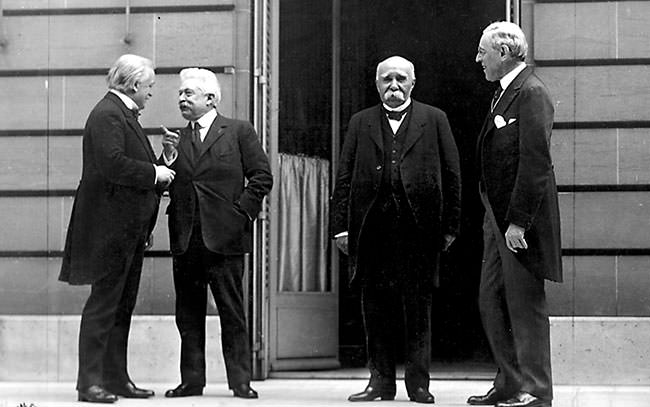
#2 Treaty of Versailles
Signed on June 28, 1919 in the Palace of Versailles, Paris, the Treaty of Versailles set conditions that were “too harsh” on Germany. It aimed at destroying the country as a major power. The country had to part with all of its colonies which would effectively be in the hands of the Allied victors, predominately Britain and France. Germany was also required to give up the gains made via the Treaty of Brest-Litovsk and grant independence to the protectorates that had been established. Alsaac and Lorraine was reclaimed by France along with the output from Saar coal mines for a period of 15 years. Belgium was to be recognized and given Eupen-Malmedy and Moreset while Poland was to receive the upper Silesian and southern part of East Prussia. This meant that Germany had to part with almost 13 percent of its European territory as well.
The treaty forbade the union of Germany and Austria and reduced Germany’s armed forces to very low levels. Its army was reduced to 100,000 men, the navy to 15,000 men while it was not allowed to maintain an air force. The treaty prohibited the country to own a certain class of equipment like armored cars, tanks, heavy guns and submarines. Germany was also made to politically accept the Weimer Republic Constitution and other western institutions which were out of sync with its culture and ethos.
Article 231 of the treaty however remained the most controversial, which in many ways put the blame of the entire war on Germany. Also referred to as the war guilt clause, it led Germany into accepting a payment of $31.4 billion (£6.6 billion, roughly equivalent to US$442 billion or UK£284 billion in 2019) as war reparations and compensation to losses they had caused to certain countries in the Entente. These enormous charges led to hyperinflation and massive unemployment in the country.

Germans of all political shades denounced the treaty and viewed it as an insult to their nation’s honor. They referred to the treaty as “the Diktat” since its terms were presented to Germany on a take-it-or-leave-it basis. The humiliation caused by the Treaty and the economic woes it brought led to the rise of the National Socialists (Nazis), which in turn led to World War II.
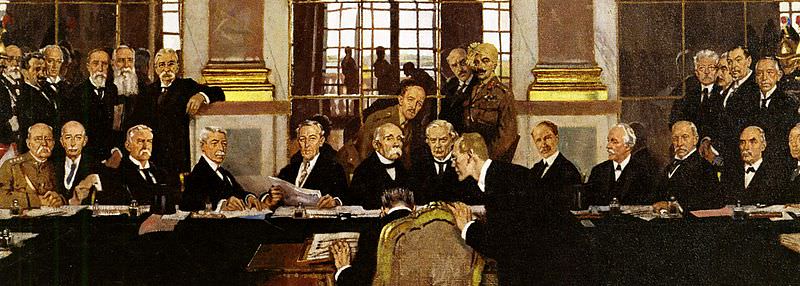
#3 Italy Rebuffed
Italy had agreed to join WWI on the side of the Allied Powers (Britain, France and Russia) in May 1915. This was based on the secret treaty of London, in which the Allies had promised Italy the historically disputed area between Italy and Austria, parts of Dalmatia, Albania protectorate from the Ottoman Empire and numerous islands along Austria-Hungary’s Adriatic coast. The Italian delegates arrived in Paris expecting the treaty to be honored. They however soon realized that their demands were being put aside, in favor of self-determination of other nationalities living in those territories, particularly the South Slav or Yugoslav people. Tensions flared up immediately and the rebuffed Italians withdrew from the conference. Unable to negotiate a better deal they would return a few days later to accept a permanent seat on the League of Nations, the Tyrol and a share of the German reparations. Many Italians felt that their pride and dreams of future greatness had been trampled on. Anger and dismay over the treaty’s provisions helped pave the way for the establishment of Benito Mussolini’s dictatorship 3 years later. The leader of the Fascist Party, Mussolini promised to rebuild Italy and recreate the Roman Empire. Italy’s dissatisfaction was among the primary reasons that it entered WWII on the side of the Germans.
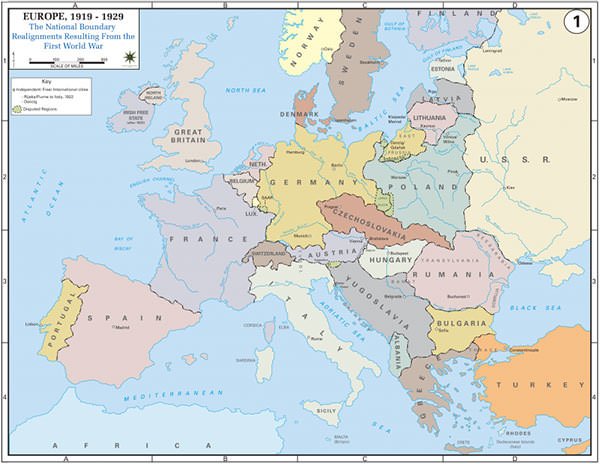
#4 Japan Dissatisfied
Like Italy, Japan had been on the winning side in World War I. They had contributed to the Allied cause by neutralizing the German threat in the Pacific, capturing German controlled territories in China and Oceania, and sending warships to assist the Allies as far as the Indian Ocean and the Mediterranean Sea. Having defeated Russia in the 1905 war and now as a victor in WWI, Japan was a rising colonial power in the east and expected to be treated as such. The Japanese leaders had arrived in Paris expecting sizable returns in the form of Germany’s pacific colonies and a decisive say in China’s domestic policy. This was however not to be and Japan had to make do with far less than they expected. Worse still, the Japanese felt humiliated by their peers at Versailles, where they were not treated with equality by the “big four”. The post WWI years saw Japan more alienated from its WWI allies, which perhaps was due to racism or fear of their own interests in Asia. Moreover, the Western Powers continuously tried to limit Japan’s influence. The changing equations would play their role as Japan would join the Germans against their WWI allies in WWII.
#5 Rise of Fascism
Fascism is derived from the Latin word fasces, which signifies a tied bundle of rods surrounding an ax. A symbol of ancient Rome, it denotes that the individuals in a society should subvert their will for the good of the state. It is based on a strong idea such as the superiority of a certain race, religion or people. Fascism differs from other authoritarian regimes in that it enlists the masses instead of excluding them and merges private and public spheres and works with existing social structures instead of destroying them. Here is how Fascism rose in the Axis nations:-
Italy
The roots of Fascism may be traced to Italy to WW1, when Benito Mussolini and other radicals formed a political group (called a fasci) supporting the war against Germany and Austria-Hungary. Italian Fascism found its ground in the rising nationalism in Italy. Its proponents positioned the modern Italian state as the heir of the ancient Roman Empire, and aimed at expanding Italian territory and restoring lost glory. Post WWI and having felt pushed aside in the Paris Peace Treaty, Italy found itself facing high inflation and unemployment problems. Some Italians thus gravitated towards the fascist ideology, it’s reminder of a great past and its promise of a great tomorrow. The major breakthrough was however achieved in 1920-21, when in the fear of a Marxist threat and revolution, the Fascists managed to accommodate the Italian conservatives and political right, multiplying their power manifolds.
In 1922, the Fascist Party decided to seize power in Italy; attacking the socialists and seizing control of cities. This was followed by the “March to Rome”. King Victor Emmanuel III, under pressure, deciding to appoint Mussolini as Prime Minister of Italy. The National Fascist Party ruled Italy until 1943, with Mussolini becoming the effective dictator by 1925. In the 1930s, the Fascists would ally with similar ambitious and belligerent regimes in Germany and Japan, setting the stage for another global conflict.
“All within the state, nothing outside the state, nothing against the state.”
Benito Mussilini
Nazi Germany
Germany was a weakened and humiliated state after WW1 and the treatment meted out to it in the Treaty of Versailles. It had been largely blamed for the war, was forced to part with its territories and was made liable to pay reparations to the allies. The Weimar Republic, which had replaced the German monarchy, was not trusted by many Germans and maintained a tenuous control on the nation. The stiff conditions had stifled the economy, depreciated the currency and frustrated the public. It was in these times that the Nationalist Socialist Workers’ Party (or Nazi Party), following the ideas of Fascism, began gaining power in Germany. With a charismatic leader, Adolf Hitler, at the helm, backed by the “Brown Shirts” militia and propagating ideas such as the racial purity of the German people, the Nazis soon became a political force.
In the 1932 elections, the Nazi Party added 123 seats to the 107 they already held, becoming the largest party in the German government. On January 30, 1933, Hitler was appointed Reich Chancellor by President Paul von Hindenburg. He would soon consolidate his position by bringing new laws and eliminating rivals. Clearly violating the Versailles treaty in 1935, he ordered re-militarization of Germany and reactivation of the Luftwaffe (air force). A new ambitious and revitalized Germany under the Nazi rule now focused on its territorial ambitions, setting the stage for another world conflict.
“Only childish and naïve minds can lull themselves in the idea that they can bring about a correction of Versailles by wheedling and begging… No nation can remove this hand from its throat except by the sword.”
Adolf Hitler in Mein Kampf
Statism in Japan
Statism was a right wing political ideology developed over time in Japan since the Meiji restoration period of 1860. Also called Japanese Fascism due to certain similarities, Statism gained support and popularity in Japan during the early Showa period preceding the Second World War. It was a mixture of ideas such as Japanese nationalism, militarism and “state capitalism”, that were proposed by contemporary political philosophers and thinkers like Ikki Kita, Sadao Araki, Seigō Nakano and Shūmei Ōkawa.
The Treaty of Versailles and the international naval treaties with the western powers had made the Japanese realize that they would never be treated as equals, and that their rising ambitions would always be impeded on. This led to a rising spirit of nationalism within the country, and a belief that implementation of a military dictatorship and territorial expansionism were the best ways to protect Japan and free Asia from Western imperialism. Overwhelming support for militarism and expansionism among the populace led to political assassinations, arrest of 30000 left wing dissidents and various coup attempts in the early 1930s. The sentiments would lead to the Second Sino Japanese War in 1937 and finally culminate in WWII.
#6 The Great Depression
The Great Depression refers to the severe economic crisis that hit the world in the early 1930s. Beginning in America it was the longest, deepest and most widespread depression of the 20th century. Some historians consider this economic crisis as a catalyst in the rise of fascism. This is because propaganda blamed the problems of the long depression of the 1930s on left-wing internationalism, minorities and immigrants. It contributed in the demise of the Weimar Republic in Germany and helped the Nazis establish power. Fascist movements grew stronger elsewhere in Europe and beyond during the time. In Hungary, Gyula Gömbös rose to power as Prime Minister in 1932. In 1934, France faced mass rioting by the supporters of the fascist Francist Movement. In 1933 Romania, the Iron Guard movement gained in political support. Other short lived fascist movements rose in Argentina, Peru and other parts of South America. Many other governments with borrowed elements from Fascism were formed during the Great Depression, including those of Greece, Lithuania, Poland and Yugoslavia.
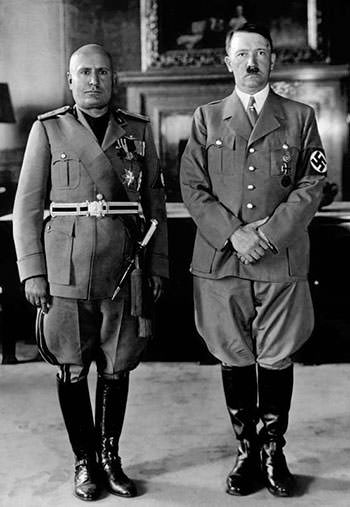
#7 Militarism
Militarism refers to the policy of a political entity or its citizens to maintain a strong military capability and use it aggressively to propagate national interests and values. Militarism had been among the primary causes that had led to the First World War. It would only be a few years after the war had ended, that it found ample support again in the fascist regimes of ambitious and subverted nations like Germany, Italy and Japan. The attitude fueled the investment and advancement in military technology and subversive propaganda. Moreover, it gave confidence to expansionist ideas of territorial conquest. The Fascists thought had always laid emphasis on militarism along with strong nationalism. However, it was the motivated populations seeking past greatness and glory that gave such impetus to these nations so as to seriously threaten the existing world order.
#8 Expansionism
The doctrine of expansionism refers to the policy of territorial, economic and cultural expansion of a state or government using its military might and media or other soft powers. Used extensively since centuries by Empires and many rulers, the pre-WWII era expansionism was mostly centered in Italy, Germany and Japan. Germany had lost all its colonies and was dismembered by the post WWI Treaty of Versailles. On the other hand, Italy and Japan, despite being on the winning side of the Allies, were denied many territories that they desired, or that were promised to them. This perceived injustice by the people of these countries led to bitterness and anger against the “Big Three”; Britain, France and the United States; which had dictated terms in the Treaty of Paris.
The Germans were battered but longed to revive their lost glory, while Italy and Japan wanted to be respected and treated as major world powers. After being treated as inferior in international dealings, the Japanese political thinkers backed the policy of expansionism for Japan. In Italy, Benito Mussolini’s will to establish a “New Roman Empire” around the Mediterranean propelled him to power in 1923. The Nazi Party was rising in Germany by the late 1920s under the leadership of Adolf Hitler, who claimed to restore the rightful territories of Germany and expand further into Europe to create a Greater Germany of all German speaking people.
The expansionist ideas led to the Japanese invasion of Manchuria in 1931 and the Second Sino Japanese War in 1937. The Japanese intent to dominate East Asian resources and markets in the 1930s brought it in conflict with the western powers, especially the U.S. The Italian ambitions to extend into Africa brought about the Second Italo-Abyssinian (Ethopian) War between 1935 and 1937. Two years later they successfully annexed the Kingdom of Albania in Europe. Meanwhile, Hitler broke the Versailles treaty to re-militarize and force the Austrian annexation in 1938. Following this remarkable success he now set his eyes on the Sudetenland territory in Czechoslovakia with its sizable German population. This was managed via the Munich Agreement with Britain, France and Italy. In return Hitler gave his word that Germany would make no further territorial claims in Europe. A promise that would be broken soon after; leading to the Second World War.
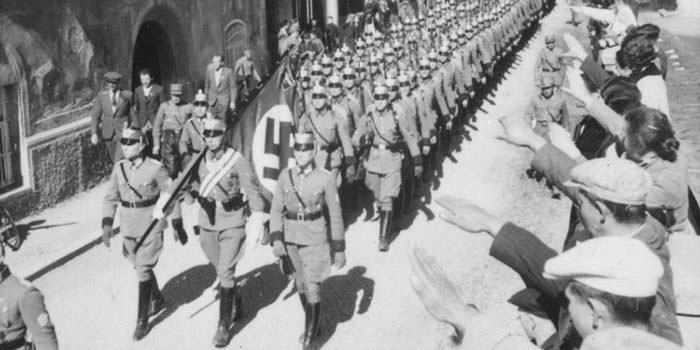
#9 Failure of the League of Nations
The precursor to the United Nations, the League of Nations had its origins in the 14 point speech of US President Woodrow Wilson in January 1918. The speech outlined his ideas for peace in the aftermath of World War I. Established as an outcome of the Paris Peace Conference in January 1920, the League was an intergovernmental organization aimed at maintaining world peace by solving disputes between countries before they erupted into open warfare. The League however failed on many counts since its inception. Created by Allied powers it was often criticized as a “League of Victors”. The major powers were unwilling to accept the possibility that their fate could be decided by other countries and had effectively given themselves veto powers. For the League to enforce its will, it needed the support of its major backers in Europe; Britain and France; and thus it was not in a position to challenge these powers. The biggest failures came in the 1930s as the organization failed miserably in stopping several of the most significant events that led to World War II such as: Invasion of Manchuria by the Japanese in 1931; Second Italo-Abyssinian (Ethopian) War of 1935-37; and German annexation of Austria and Sudetenland in 1938.
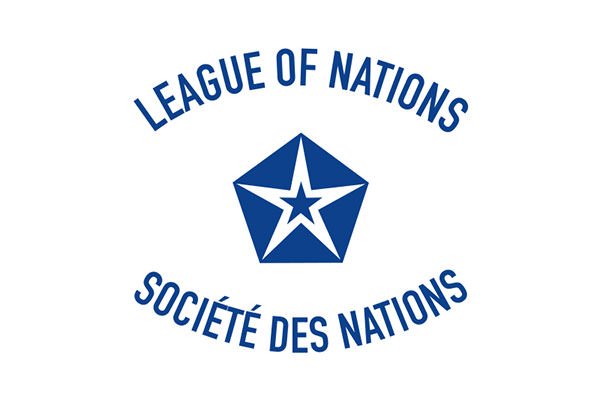
#10 Invasion of Poland
Interwar Poland
The First World War had led to the reestablishment of the state of Poland and the Second Polish Republic, also referred to as Interwar Poland. Between the two world wars, Poland had successfully managed to fuse the territories of the three former partitioning powers (German, Russian and Austro Hungarian Empires) into a cohesive nation state.
Polish Corridor
The post WWI Treaty of Versailles had furthermore carved out a semi-autonomous city state consisting of the port city of Danzig (Gdańsk), thus giving Poland a corridor to the Baltic Sea. This area was carved out of West Prussia and dominated by a German population. Moreover, it separated the province of East Prussia from the rest of Germany. It thus remained a politically charged state between 1919 and 1939, with Poland seeking non aggressive treaties with both Russia and Germany. In 1934, the Nazi government had also signed a ten-year German–Polish Non-Aggression Pact with the Piłsudski regime. Things would however change in 1939 with the growing ambitions of Adolf Hitler.
Molotov–Ribbentrop Pact
Signed on 23rd August 1939 in Moscow, the Molotov Ribbentrop Pact was officially a Non-Aggression treaty between Russia and Germany. The pact however had a secret protocol, in which the independent countries of Finland, Estonia, Latvia, Lithuania, Poland and Romania were divided into spheres of interest of the parties.
The Invasion
In early 1939 after success in Austria and Czechoslovakia, Adolf Hitler had his eyes on Poland and the Danzig situation. He thus demanded the construction of an extra territorial railway and highway project through the Polish Corridor connecting Berlin and Königsberg (Reichsautobahn Berlin-Königsberg). In return the Polish were promised territories in Poland’s neighbors and a 25-year extension of the non-aggression pact. Fearing that the project would link Danzig with a much stronger Germany and threaten their access to the sea, Poland refused and signed the Polish-British Common Defense Pact on 25th August 1939.
World War II began with the Nazi German invasion of Poland on September 1, 1939. On September 3, Great Britain and France issued an ultimatum to Germany to end the fighting. When no reply was received, both nations declared war. Britain and France tried to convince the Soviet Union to join in this deterrence, but the USSR honoring their Molotov Ribbentrop Pact, launched their own invasion of Poland on 17th September. Under assault from two directions, the Polish defenses crumbled soon and by the end of the month Warsaw had fallen. During the campaign, Great Britain and France, who were both slow to mobilize, provided little support to their ally and Poland was split into two zones, one occupied by Nazi Germany and the other by the Soviet Union.

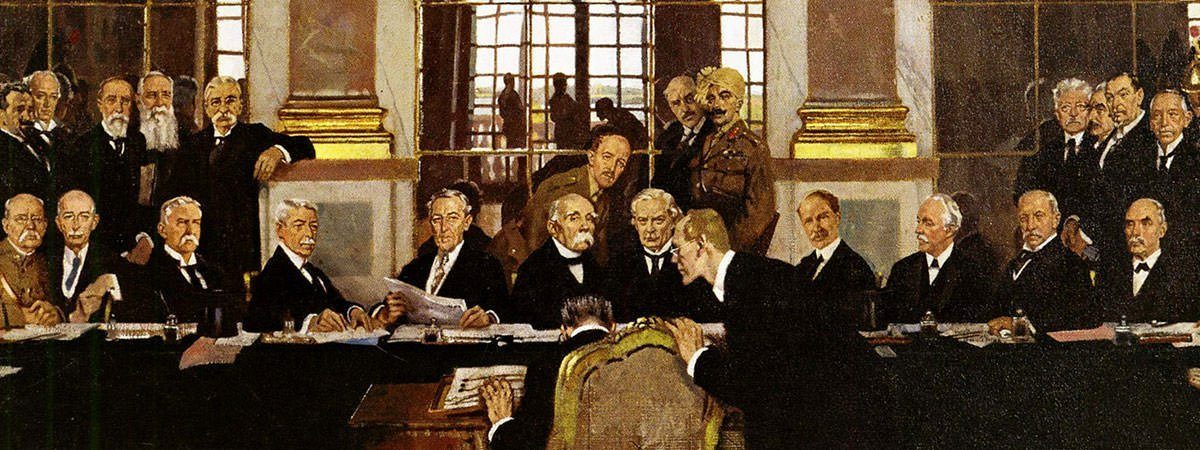
This is part of a false narrative of Versailles as overly harsh, this is a false narrative purposely spread by the Germans after WWI. The terms of their peace with France after the Franco-Prussian war were much harsher.